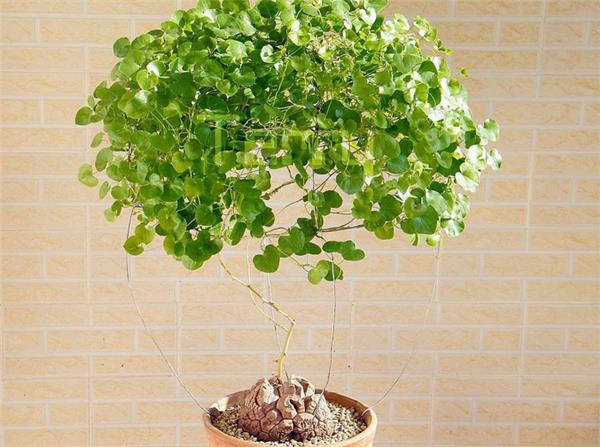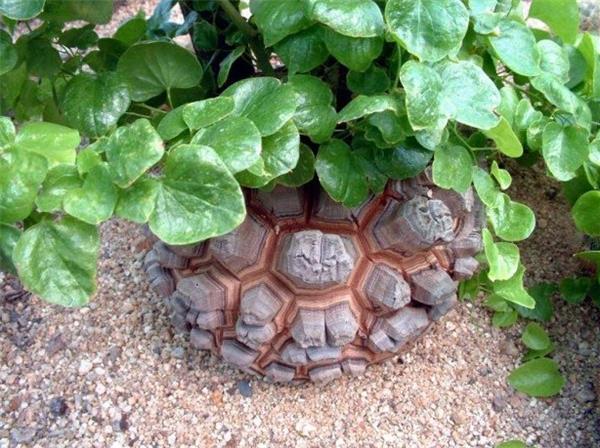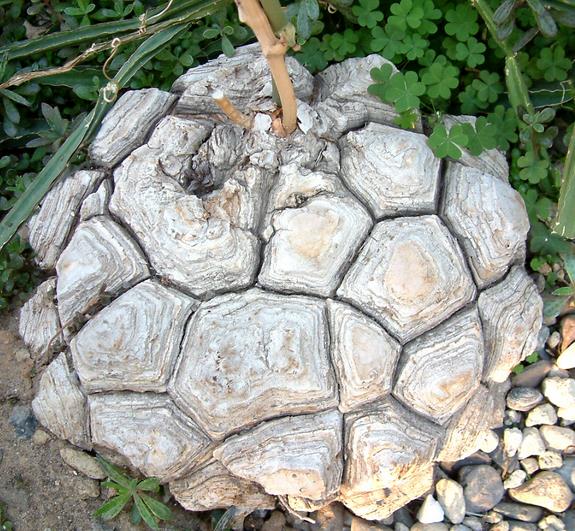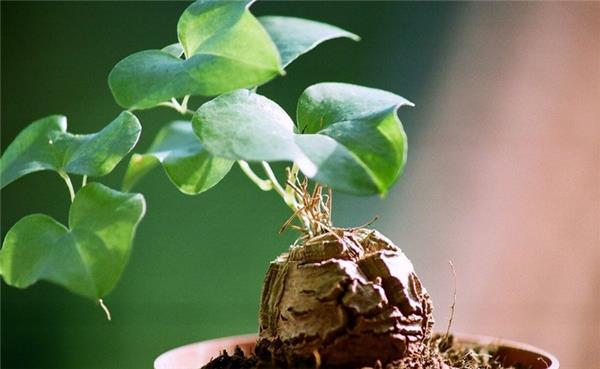Introduction and culture method of plant tortoise shell with tortoise shell
Tortoise shell dinosaur is an ornamental plant, named because the epidermis of the adult plant is cracked, similar to the tortoise shell. It is divided into two types: summer hibernation in South Africa and hibernation in Mexico. Let's take a look at the knowledge of tortoisaurus.

First, the introduction of tortoise shell dragon
Perennial climbing herbs. The height of the plant can reach 6 meters. Dioecious. The branches grow clockwise. With fat tuberous roots, up to 90 cm long. Leaves subcordate, entire, light green. Male flowers solitary, or arranged in racemes; female flowers solitary in racemes, yellowish green; ovary inferior. Capsule. Seeds winged.

Second, the ecological habits of tortoisaurus.
Because the native place is quite dry in summer, it grows in winter and dormancy in summer, which is a "winter type species". However, there is a kind of tortoise-shell dinosaur native to Mexico, whose stem character is almost the same as that of tortoiseosaurus, but it grows in summer and dormant in winter. The growth habits of the two are just the opposite, so they need to be carefully distinguished before cultivation. The biggest difference between the two is the difference in leaves. The leaves of Mexico are kidney-shaped, 8-10 cm long, and the leaf tip is significantly longer than that of South Africa.

Third, the cultivation techniques of tortoise shell dragon.
South African tortoise shell is a stem-like succulent plant, is a member of the Dioscoreaceae, native to Cape Province of South Africa. The local climate is Mediterranean, mild and rainy in winter, the average temperature is about 15 ℃, and the summer climate is dry. South African tortoise shell dinosaur is a "winter type" species, that is, summer dormancy.
The main results are as follows: 1. The cultured soil should have good permeability and do not contain too much humus, otherwise it is easy to rot or burn roots. During cultivation, the stem 1 stroke 3 should be buried in the soil, so that it is easy to cultivate and the stem grows faster.
2. Watering should be done by soaking and should be controlled. It is best not to soak through it. Usually, it can be soaked to the lower part of the basin soil.
3. South African tortoise shell dragons like semi-shade, except for more sunlight during the day in winter and proper light in early spring and late autumn, the rest of the time should be kept indoors or in the inside of the balcony.
4. Temperature, humidity and ventilation are very important for the growth of South African tortoiseosaurus. The average temperature is 15 ℃ ~ 25 ℃. It can grow as usual in the environment of more than 10 ℃ and sunshine, and stagnate at about 5 ℃. Therefore, it is best to keep it in a warmer place in winter to maintain the temperature needed for its growth; after summer, South African tortoise crustaceans will gradually enter a dormant period, and around the end of June, inflated stems usually have only residual withered branches. at this time, it is best to cut off the withered branches to promote new branches, conservation should also be careful. If there are conditions, you can use the cover basin method (set a large basin outside the basin), pour it in the cover basin when watering, and keep the basin soil in the inner basin dry. Green slender trailing stems can be drawn around the end of July, but the leaves do not stretch. At this time, it should be maintained in a semi-overcast ventilated place and immersed in water every two weeks. From the early autumn, the leaves gradually extend and grow, and the trailing stems also elongate and may have branches. At this time, the times of immersion can be gradually increased, and diluted liquid fertilizer can be applied once if necessary. In the rainy days of spring and autumn (the temperature is not lower than 15 ℃), South African tortoise shell dragons can be placed in an outdoor shelter and ventilated place, so that they (leaves, stems and basin soil) can absorb the water vapor in the air and enjoy the moisture of nature, and South Africa tortoise shells will surely flourish. This kind of environment is the best growing environment for tortoise shell dinosaur in South Africa.
South African tortoise dinosaur should try to choose plants that already have hexagonal cork nodules wrapped in the stem, but there are no such cork nodules in the seedling stage. At the same time, we should pay attention to the difference between it and D.macr: their stem shape is almost the same, while the massive root of Mexico is slightly flattened; the leaf shape is slightly different. Mexico has large leaves with 7 veins, while South Africa has small leaves with 5 veins and 7 veins, all of which are heart-shaped and triangular, but the tips of Mexican crustosaurus are obviously longer. As the Mexican tortoise shell dinosaur is a "summer type" species (that is, winter dormancy), cultivation requirements are different, so it has to be carefully distinguished.

IV. Species classification of tortoise shell dinosaur
It has a variety of its own: Alpine tortoise shell dragons. Other species of the same genus are Mexican tortoisaurus, forest tortoisaurus and imperial turtles.
Fifth, the function and use of tortoise shell dragon
Tortoise shell dinosaur is one of the most famous succulent plants, which is not only one of the representatives of stem succulent plants, but also the representative of succulent plants of Dioscorea. Botanical gardens should be collected as a type, and can also be collected and cultivated by some enthusiasts.
The above is the knowledge of tortoisaurus. I hope I can help you.
The above is the knowledge of tortoisaurus. I hope I can help you.
Related
- Wuhan Hospital Iron Tree Blooming Result Was Instantly Frightened by the Gardener Master
- Which variety of camellia is the most fragrant and best? Which one do you like best?
- What is the small blue coat, the breeding methods and matters needing attention of the succulent plant
- Dormancy time and maintenance management of succulent plants during dormancy
- Minas succulent how to raise, Minas succulent plant pictures
- What are the varieties of winter succulent plants
- How to raise succulent plants in twelve rolls? let's take a look at some experience of breeding twelve rolls.
- Attention should be paid to water control for succulent plants during dormant period (winter and summer)
- Watering experience of twelve rolls of succulent plants
- Techniques for fertilizing succulent plants. An article will let you know how to fertilize succulent plants.



